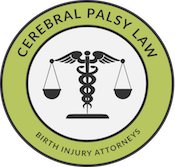What is Hypothermia Treatment?
Hypothermia treatment, also known as brain cooling, is a relatively new treatment option that lowers a newborn’s body temperatures in order to reduce neurological injury. Traumatic births restrict the flow of oxygen to a baby’s brain and a brain injury called hypoxic ischemic encephalopathy (HIE) often results. Research indicates that the initiation of hypothermia treatment within six hours of an oxygen-depriving insult significantly reduces chances of death and neurological injuries like cerebral palsy.
During hypothermia treatment, physicians cool a baby’s body temperature down using a cooling cap or a cooling blanket. The baby’s body temperature is brought down to about 91 degrees Fahrenheit (33 degrees Celsius) for around 72 hours. Reducing a baby’s body temperature slows metabolic rate, ultimately allowing cells to recover over a longer period of time in order to avoid any further damage from normal oxygenation and blood flow to the injured cells. The goal is to leave the child with little or no brain damage.
At Michigan Cerebral Palsy Attorneys, our birth injury lawyers understand the complicated legal issues surrounding cerebral palsy, hypoxic ischemic encephalopathy, and hypothermia treatment. If you believe an act of medical negligence caused your child’s birth injury, don’t hesitate to contact on of our skilled attorneys. Reach out to Michigan Cerebral Palsy Attorneys with your concerns, case inquiries, or questions in either of the following ways:
Fill out this form to reach our lawyers online
or
Call our lawyers toll-free at (888) 592-1857
When Is a Baby Eligible for Hypothermia Treatment?
Though different hospitals differ in their eligibility guidelines, the following stipulations are generally required to begin hypothermia treatment on a newborn:
- The baby must have suffered an oxygen-depriving insult during or just after birth and been diagnosed with hypoxic ischemic encephalopathy
- Must be at least 36 gestational weeks old
- The oxygen-depriving insult must have happened within a six hour time frame from the onset of treatment
- The baby’s pH is less than 7 or base deficit is 16 or greater in umbilical cord arterial blood. If this is not available, the baby must have had:
- A sudden event during labor such as non-reassuring fetal heart tones, umbilical cord prolapse, uterine rupture, maternal trauma, hemorrhage or cardio-respiratory arrest and either a 10 minute Apgar score of five or less or assisted ventilation at birth that lasts at least ten minutes.
- Evidence of seizures or neonatal encephalopathy (global brain injury) as evidenced by a standard neurological exam
When Should Physicians Begin Hypothermia Treatment?
It is protocol for physicians to perform hypothermia treatment if they suspect hypoxic ischemic encephalopathy occurred around the time of birth. The following are conditions that can cause HIE and oxygen restriction to the baby’s brain:
- Uterine rupture (rupture of the womb wall)
- Prolonged delivery: Failure to quickly deliver the baby when fetal distress signs are evident signifies fetal oxygen deprivation (for instance, a delayed emergency C-section).
- Prolonged and arrested labor
- Placenta previa (the placenta blocks the baby’s passage through the birth canal)
- Oligohydramnios (low amniotic fluid)
- Premature rupture of the membranes (PROM)
- Preeclampsia (pregnancy-induced high blood pressure)
- Post term pregnancy and postmaturity syndrome
- Placental abruption
- Intracranial hemorrhages (brain bleeds), which can be caused by labor assistance tools like forceps and vacuum extractors, the labor-induction drugs Pitocin and Cytotec, mismanagement of cephalopelvic disproportion (CPD), abnormal presentations like face or breech presentations, and shoulder dystocia.
- Improper management of respiratory status after birth: For instance, failure to properly manage apnea, breathing machine procedures, or surfactant doses.
- Anesthesia mistakes
- Fetal stroke
- Maternal infections in the mother can travel to the baby: Infections include meningitis, Group B Strep (GBS), herpes simplex virus (HSV), urinary tract infection (UTI), bacterial vaginosis (BV) and chorioamnionitis.
Video: Hypothermia Treatment for HIE and Birth Injuries
In the following video, our on-site labor and delivery nurse specialist Andrea Shea explains treatments for birth injuries, cerebral palsy, and hypoxic ischemic encephalopathy (HIE). Learn more about the basics of hypothermia treatment by viewing her video:
Legal Help for Birth Injury Cases Related to Hypothermia Treatment
Michigan Birth Trauma Lawyers Making a Difference
Because the resultant brain injuries of oxygen deprivation are so devastating, medical professionals are obligated to handle cases of HIE and hypothermia treatment with great care. Judgment and practice errors can occur in HIE, birth asphyxia, and hypothermia treatment cases, and if your baby required hypothermia treatment as a result of these cases and is now permanently disabled, there is a high chance that medical negligence occurred.
For reference, the following medical errors reflect negligence:
- Failure of medical professionals to prevent hypoxic ischemic encephalopathy or birth asphyxia by:
- Misdiagnosing or inappropriately treating uterine rupture, umbilical cord problems, or placental abruption
- Mishandling VBAC (Vaginal Birth After C-section)
- Delaying or failing to order an emergency C-section
- Fetal monitoring errors
- Failure to inform the parents about hypothermia therapy as a treatment option
- Failure to begin hypothermia treatment within six hours of birth
- Failure to transfer the infant to an appropriate facility with hypothermia capabilities
- Failure to follow organizational policies and protocols for hypothermia therapy
If you recognize scenarios like these from your own pregnancy or delivery, we urge you to reach out for legal help. Contact our experienced Michigan cerebral palsy lawyers today for a free case review—you may call us toll-free at (888) 592-1857 or fill out this online contact form.
